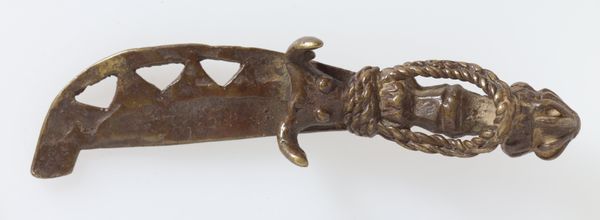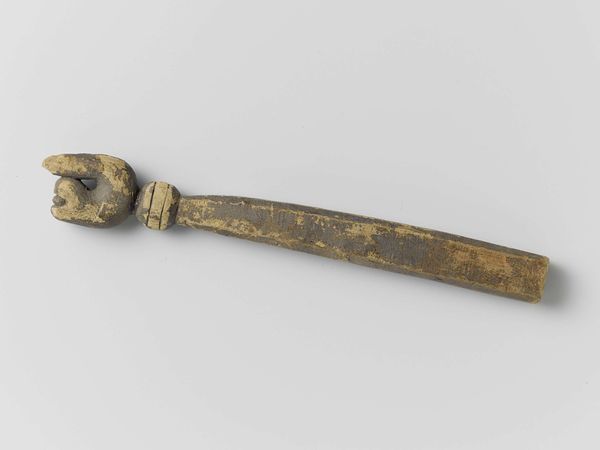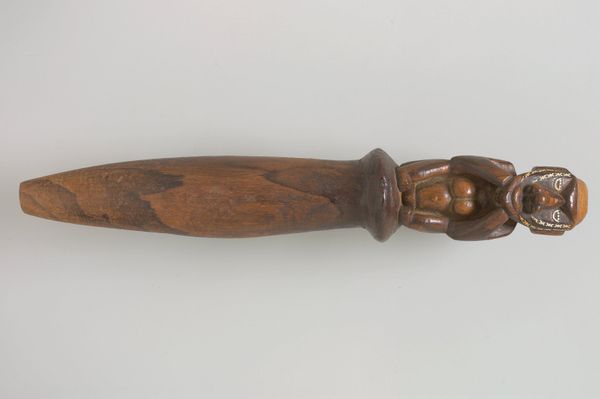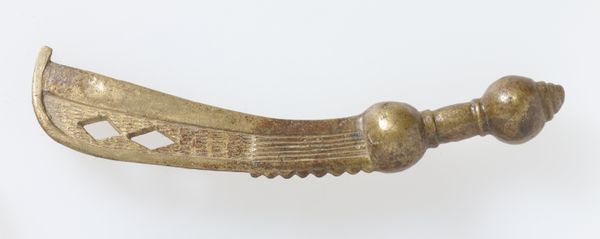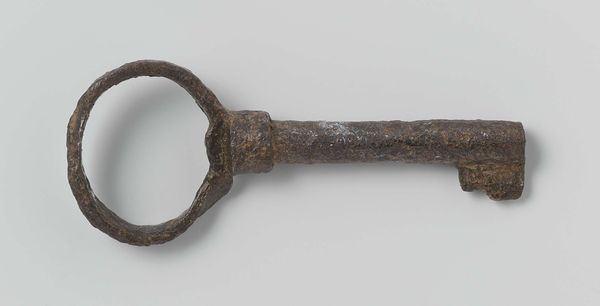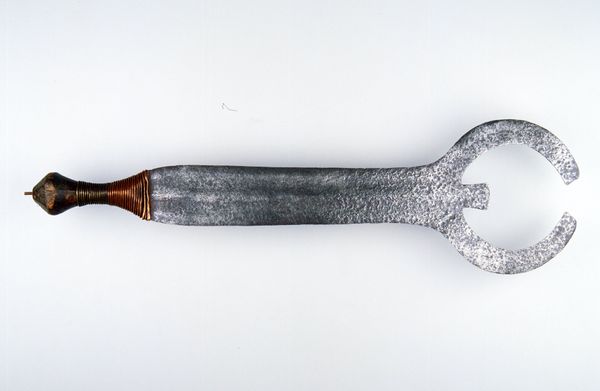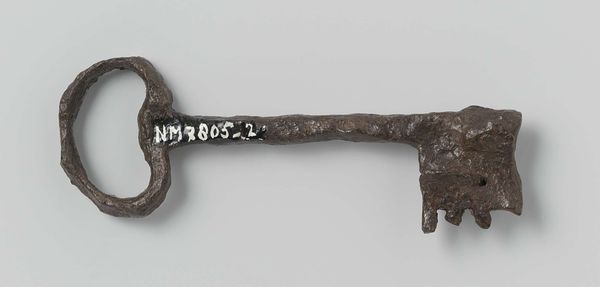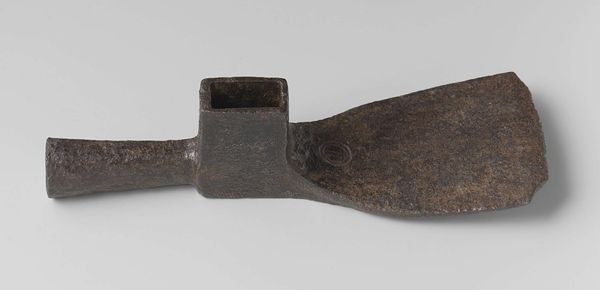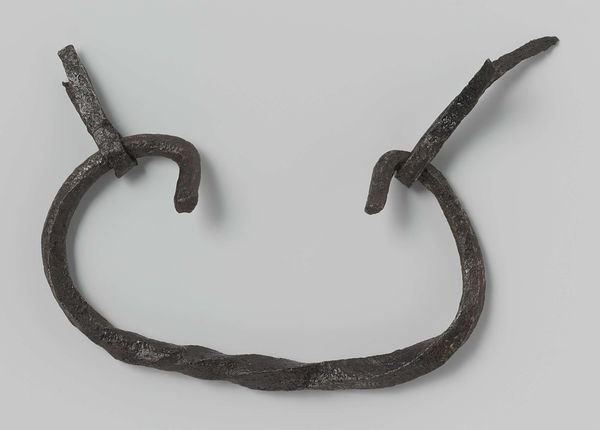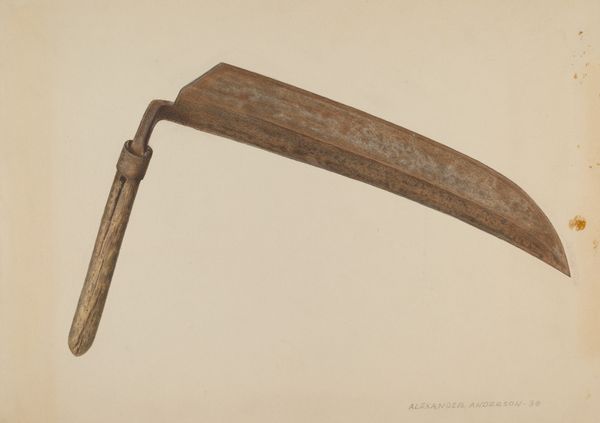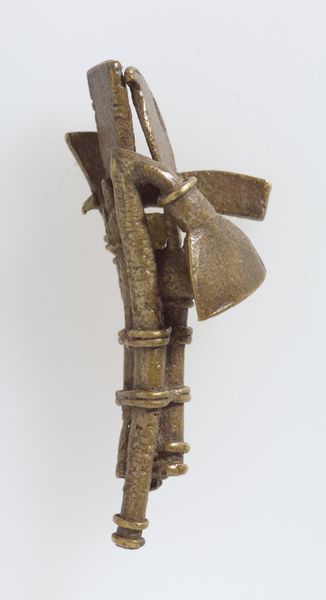
metal, sculpture, wood
#
weapon
#
metal
#
sculpture
#
figuration
#
ancient-mediterranean
#
sculpture
#
wood
Dimensions: 17 3/8 x 2 5/8 x 1 1/4 in. (44.13 x 6.67 x 3.18 cm)
Copyright: Public Domain
Curator: This is a dagger, estimated to have been crafted sometime between 1910 and 1930. It resides here at the Minneapolis Institute of Art. The materials used appear to be wood and metal, skillfully combined. Editor: There's something quite poetic about this weapon. It’s austere, yes, but there’s this subtle flourish, almost whimsical, about its design, contrasting the brutal functionality with… an attempt at elegance? It's compelling, that dance. Curator: That tension is part of what makes it so interesting. As an object, the dagger speaks volumes about power, certainly, but also about the social context that shaped its creation and purpose. Were these functional tools or emblems of status? Likely both. Editor: I see your point. It also evokes a more personal, imaginative reflection for me; if this dagger could talk, what stories of betrayal, or loyalty, or desperation would it whisper? The metal seems almost tarnished with untold tales. Curator: Museums inevitably detach objects from their original environments. Here, we are prompted to reflect on how we collect, categorize, and ultimately understand objects charged with such potentially violent histories. It's never a neutral act. Editor: Right. The politics of display... Always there. I’m thinking, beyond its display, what sort of hand held this, the weight of it, the purpose envisioned each time it was drawn? Curator: Such questions, impossible to fully answer, reveal that artifacts contain absences as much as presences. Our dialogue with them is as much about our projections, I feel, as any definitive history. Editor: Indeed. Leaving one pondering the meaning we ascribe to weapons, in art, and in the wider world. This object is an elegant tool and emblem but it carries our human shadows, ultimately.
Comments
No comments
Be the first to comment and join the conversation on the ultimate creative platform.


